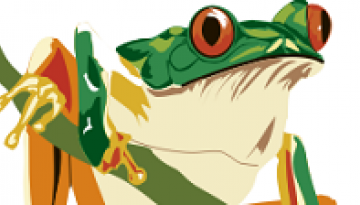05.05.2019 01:37 Date: May 5, 2019 Today’s Doodle by Warsaw-based illustrator honors Stanisław Moniuszko, the Polish musician, composer, conductor, and teacher. Born on May 5, 1819, Moniuszko went on to become director of the Warsaw Opera House where he premiered many of his own works, including one of the most beloved operas in Polish history. After being taught music by his mother as a child, Moniuszko was sent to study harmony, counterpoint, instrumentation, and conducting with the director of the Singakademie Music Society. There, he decided to become a composer, with a special interest in the human voice. While working as an organist in Wilno, Moniuszko began writing his songbook, Śpiewnik Domowy , publishing the first of 12 volumes in 1843. During a trip to Warsaw, he met the poet Włodzimierz Wolski, who’d written a libretto for an opera named Halka, based on a Polish folk story. Moniuszko composed the music, drawing inspiration from traditional Polish dance music known as polonaises and mazurkas. Halka premiered in Wilno in 1848 and later traveled to Prague, Moscow, and St. Petersburg. Expanded to four acts in 1858, the opera was hailed as a Polish cultural treasure, making Moniuszko a national hero. A statue of Moniuszko stands outside Warsaw’s Opera House to this day, and his legacy lives on in The Stanislaw Moniuszko Music Academy in Gdansk. An international vocal competition in his name also takes place every three years. In it, finalists compete for a chance to sing with Poland’s National Opera on the stage where Moniuszko’s legend began. Guest artist Q&A with Gosia Herba Q: What were your first thoughts when you were approached about the project? A: Hurray! Q: Did you draw inspiration from anything in particular for this Doodle? A: My major inspiration was the art of a Polish painter Zofia Stryjenska and Polish folk art. Q: What message do you hope people take away from your Doodle? A: Polish art is beautiful, interesting and brings joy. Google it! :) Location: Tags:
05.05.2019 00:36 Date: May 5, 2019 Location: , , Tags:
04.05.2019 17:41 Date: May 5, 2019 Location: , Tags:
03.05.2019 18:37 Date: May 4, 2019 Today’s Doodle celebrates Eddie Aikau, big wave surfer, lifeguard, and enduring symbol of Hawaiian heritage. Born on the island of Maui on this day in 1946, Eddie moved to Oahu with his family in 1959 and went on to become the first lifeguard hired by Honolulu officials to work on the North Shore of the island. Not a single life was lost while he served as a lifeguard at Waimea Bay, making some 500 rescues without the assistance of a jet ski or any modern equipment. Eddie was famous for making rescues even in surf that reached 30 feet high. His fearlessness went on to inspire the slogan “Eddie would go.” Hailing from a surfing family, Eddie was one of the first native Hawaiians to win the prestigious Duke Kahanamoku Invitational Surfing Championship in 1977, just four years after his older brother Clyde, who was the very first. Aside from his distinguished surfing career, Eddie found other ways to represent the culture of his native island. In 1978, Eddie joined the crew of the Hokule'a, a historically accurate double-hulled canoe retracing the ancient Polynesian migration route to Hawaii. The vessel sprung a leak and capsized in rough waters. Eddie was last seen heroically paddling off on his surfboard towards the nearest island to seek help for the crew, who were later rescued by the U.S. Coast Guard. Today, Eddie’s legacy lives on through the as well as the prestigious Eddie Aikau Invitational, which has seen some of big-wave surfing’s greatest names competing with maximum respect for the authenticity of surf culture. Here’s to you, Eddie. Special thanks to the Eddie Aikau Foundation for their partnership on this Doodle. Below, they share their thoughts on Eddie’s life, legacy, and the Doodle: A legendary surfer and lifeguard for the City & County of Honolulu, Eddie Aikau was one of the greatest big wave riders in the world. As the first lifeguard ever stationed at Waimea Bay on the North Shore of Oahu, Eddie is credited with saving the lives of hundreds of swimmers and surfers, often in conditions no one else would dare enter. His legacy lives on with a memorial Big Wave Surfing Invitational, also known as"The Eddie," held annually at Waimea Bay—but only when the waves are over 20 feet high. We hope people enjoy this Google Doodle and take a moment to remember and celebrate Eddie, a true symbol of the "Aloha Spirit." Pictured: Eddie Aikau Photo credit: Image courtesy of David Bettencourt Location: , , , , , , , , Tags: , ,
01.05.2019 03:07 Date: May 1, 2019 “Sculpture is like farming. If you just keep at it, you can get quite a lot done.” -Ruth Asawa In honor of Asian-American Pacific Islander month in the US, today’s Doodle celebrates Ruth Asawa, the acclaimed Japanese-American artist and educator who overcame great adversity throughout her journey, ultimately exhibiting her intricate wire sculptures and works on paper in museums around the world. Born in 1926, Asawa’s family made a living as farmers until World War II, when they were sent to the US government internment camps for the Japanese Americans living on the West Coast. There, Asawa pursued her interest in art, getting lessons from fellow camp inmates. Following sixteen months of internment, Asawa received a scholarship to Milwaukee State Teachers College, where she studied to become an art teacher. Three years later, she was prevented from doing her student teaching because of her Japanese heritage. Undeterred, she transferred to the experimental Black Mountain College in North Carolina. It was there that she blossomed as an artist and met the architect Albert Lanier, whom she would marry and start a family with, raising six children together. Adapting methods she learned in Mexico, where people made wire baskets for domestic use, Asawa used similar techniques to create the looped wire sculptures she became known for. Asked to name her inspirations, she spoke of “plants, the spiral shell of a snail, seeing light through insect wings, watching spiders repair their webs in the early morning, and seeing the sun through the droplets of water suspended from the tips of pine needles while watering my garden.” While some critics dismissed her art as “feminine handiwork” early on, Asawa’s reputation has grown over time. Her legacy lives on in public commissions in California as well as museums and galleries around the globe. She designed the Japanese-American Internment Memorial Sculpture in San Jose in 1994 as well as SF State University’s Garden of Remembrance, which includes boulders from ten internment camps. Asawa also advocated for arts education for kids, including the creation of a public arts high school that was later renamed the Ruth Asawa San Francisco School of the Arts. Since 1982, the city of San Francisco has also declared February 12 to be Ruth Asawa Day—a fitting tribute to a woman who lived according to her belief that “art will make people better.” Special thanks to the children of Ruth Asawa, the Asawa Lanier family, for their partnership on this project. Below, they share their thoughts on their mother’s legacy: Our mother was first, and foremost, a teacher. She loved to teach us lessons, especially the habit of hard work and the importance of creative problem solving. Hers was a life lived in a large, diverse community where the boundaries between making art, family, cooking delicious meals, activism, and compassion for those less fortunate merged into one never-ending cycle. She often worked late at night while we slept. She once explained, “When you put a seed in the ground, the ground doesn’t say, ‘Well, it’s 8 hours, I’m going to stop growing.’ You put it in the soil, and that bulb grows every second it is attached to the Earth. I think that every minute we are attached to this Earth we should be doing something.” As a young woman at Black Mountain College, she was fortunate to study with professional artists who expected her to think as an individual. It was the quality of this experience that mattered to her, where each person contributed but kept their own integrity. It’s like the design of her looped wire sculptures, which share the space they live in. “I am able to take a wire line and go into the air and define the air without stealing from anyone. A line can enclose and define space while letting the air remain air.” She was proud of her work in public education – encouraging artists in the schools and the public arts high school which she helped create and bears her name – The Ruth Asawa San Francisco School of the Arts. In an interview taken in her 70s, she offered some advice: “It’s important to learn how to use your small bits of time, your five minutes, your ten minutes. All those begin to count up...Don’t wait until your children are grown, until your husband is retired...Learn how to use your snatches of time when they are given to you.” Pictured: Ruth Asawa, working on a wire sculpture at her Saturn Street home, San Francisco, 1957. Artwork © Estate of Ruth Asawa Photo credit: Imogen Cunningham © 2019 Imogen Cunningham Trust, courtesy of David Zwirner Location: , , , Tags:
01.05.2019 03:07 Date: May 1, 2019 Location: Tags:
01.05.2019 03:07 Date: May 1, 2019 Today’s Doodle celebrates the dawning of a new era in Japan as the Reiwa period begins! The name of the nation’s 248th era consists of two Japanese kanji characters that can be translated into English as “beautiful harmony.” Historically, each gengō — as the names of eras are known – has been inspired by classical Confucian texts and debated by high-ranking officials of the imperial court in a time-honored process known as nanchin. The gengō aims to express a vision for the future and speak to the hopes and dreams of the Japanese people. The previous Heisei era began when Emperor Akihito succeeded his father, Emperor Hirohito, on January 8, 1989. Emperor Akihito announced plans to step down in 2016, a departure from the tradition that emperors reign throughout their life. The name Reiwa was taken from the Man'yōshū , which is the oldest surviving collection of Japanese poetry. The specific passage reads “It is now the choice month of early spring, the weather is fine, the wind is soft. The plum blossom opens...” Happy new era, Japan! Location: Tags: , ,












